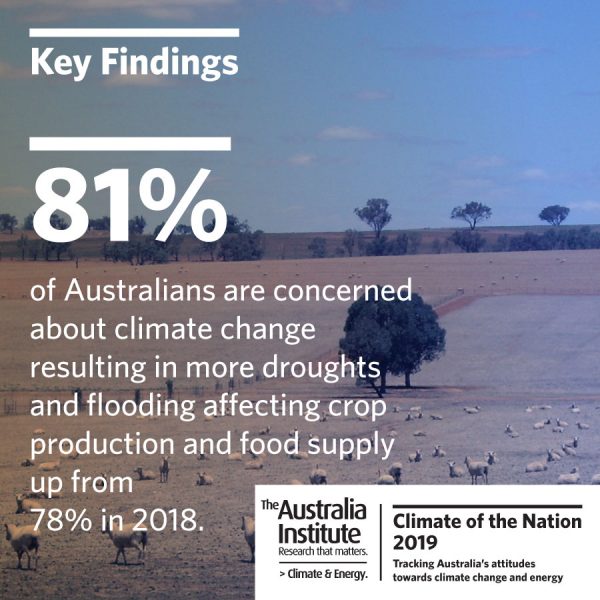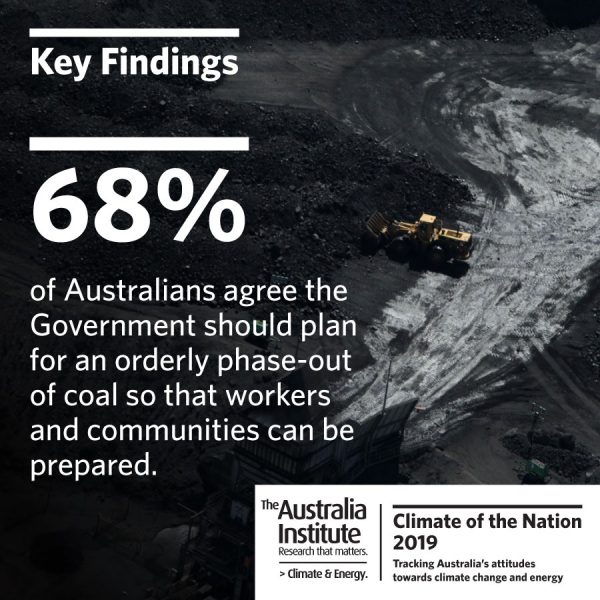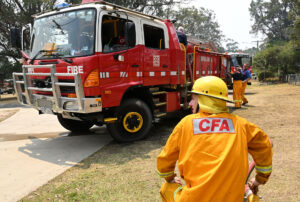Climate of the Nation 2019 wrap

The annual Climate of the Nation report has tracked Australian attitudes on climate change for more than a decade.
This is the second Climate of the Nation report produced by The Australia Institute, continuing the work of the Climate Institute (2007-2017).
Key findings include:
- 81% of Australians are concerned that climate change will result in more droughts and flooding (up from 78% in 2018)
- 78% of Australians are concerned climate change will lead to water shortages in our cities, an eleven percentage point increase in the past two years (67% in 2017; 72% in 2018).
- 54% of Australians reject the idea that Australia should not act on climate change until other major emitters like the US and China do (25% agree we should not act, 21% neutral/don’t know)
- 62% of Australians supports a levy on fossil fuel exports to help fund local adaptation to climate change.
- 64% of Australians think Australia should have a national target for net zero emissions by 2050 (15% think it shouldn’t).
Download Climate of the Nation 2019 report.
Press coverage
- ABC RN Breakfast | 4 of 5 Australians feeling climate change impact now, research shows
- SBS News | Majority of Australians think the climate is already changing, report shows
- Guardian Australia | Australians increasingly fear climate change-related drought and extinctions
- News.com.au | Climate of the Nation: What Aussies really think about climate change revealed
- ABC News | Climate change survey shows Australians want action on emissions, but are divided on nuclear
Australians increasingly fear climate change related drought and extinctions https://t.co/wIWwTGJMBd
— Guardian Australia (@GuardianAus) September 9, 2019
Survey says Australians want urgent action on climate change https://t.co/mVplpsSv2z
— ABC News (@abcnews) September 9, 2019
Shareable content
Resources
Related research
Between the Lines Newsletter
The biggest stories and the best analysis from the team at the Australia Institute, delivered to your inbox every fortnight.
You might also like
Labor’s pledge to depoliticise the public service is undermined by the government only hearing what it wants to hear on climate change
While last year’s robodebt royal commission exposed a shocking lack of ethics among senior ranks of the Australian public service, the systemic condition still largely seems to be regarded as an aberration.
Climate of the Nation | Between the Lines
The Wrap with Richard Denniss There has never been a more profitable time to cause climate change. This year, while millions of Australians are struggling with a cost of living crisis, fossil fuel companies operating in Australia made $140 billion in profits. The fossil fuel industry will never tire of making that much money, which is
That’s A Wrap! | Between the Lines
The Wrap with Richard Denniss As 2023 rapidly draws to a close, the festive season fast approaches. For many, that means thinking about Christmas or, more astutely, the cost of Christmas. With profit fuelled inflation rising faster than most worker’s ‘real wage’ (that is the wage adjusted for inflation), many Australians can’t afford to buy






